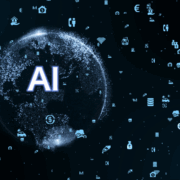GenAI Outcomes or Autonomous AI Architecture: Where Should CIOs Focus?
CIOs are stuck on GenAI, but is the future autonomous AI?
TBR attended several tech conferences and analyst events in recent months, and AI was the inescapable topic at each one. In particular, KPMG’s Technology and Innovation Symposium in Deer Valley, Utah, stands out, in part because of the sheer breadth of opportunities discussed, use cases highlighted, and future hopes and fears laid out in stark detail.
In our latest blog series, TBR on AI in 2025, we intend to connect those ideas with research and analysis conducted by TBR over the last few years to highlight implications for the companies we cover across the technology ecosystem. Topics will include how to talk to AI agents, who gets first and consistent access to limited resources like energy, and humans in the age of AI transformation. In this blog, we analyze the prospects for accelerated AI adoption if CIOs continue to focus on the architecture needed for generative AI (GenAI) outcomes rather than planning for the architecture needed for autonomous and deterministic AI.
What good are AI-enabled solutions if an enterprise’s IT environment and architecture can’t handle the data orchestration demands and IT becomes a roadblock to faster, better, clearer insights from AI, rather than the business accelerator expected of IT departments in the AI era? After more than a decade of consultancies and IT services companies helping IT departments become business drivers, will inadequate architecture slow down AI adoption and AI agents at scale?
Listen now: Evolving Complex Ecosystems to Solve Enterprise Transformation
Agentic AI promises enterprise transformation, but messy data, tech fatigue and architecture demands slow ROI
For years, consultancies have been exceptional at making sure CIOs become part of the business, not a cost center. In the most successful cases, IT has been a growth driver. So, agentic AI provides another opening, right? For consulting, yes, but the near-term business impact and midterm return on investment look less likely, in part because of a refrain TBR hears constantly from CIOs and their consulting and IT services providers: The data is a mess. Compounding this reality is that the relentless new technologies all require new budgets and increased spending. Just as CIO and IT departments understand how to shift their IT architecture to take advantage of GenAI, the consulting and IT services message for agentic AI changes to, “That’s not going to be enough.” At what point does fatigue take over and cause “good enough” to replace the fear of missing out (FOMO)?
Further, what will autonomous and deterministic AI architecture look like? Can enterprise IT buyers be certain today that investments in agentic AI will hold up for long enough to see some ROI or even simply be adequate for the next wrinkle — or wave — of change in the AI ecosystem? Will today’s ideas hold up? And new architecture necessitates change management, which no enterprise loves to pay for and many IT services and consulting buyers may be scarred by past experiences with cloud, blockchain, metaverse and GenAI. Are CIOs really going to believe they need to change to be ready for next-generation AI architecture needs?
So many questions, and here are some thoughts about answers (for now):
- Leaders, the crowd and the lab: At the 8th annual KPMG Tech & Innovation Symposium, one of the speakers proposed that smart organizations will have leaders informed about and committed to AI, a wide range of employees experimenting with AI (“the crowd”), and dedicated employees developing solutions that can scale to meet the organization’s unique needs and fit its tech environment (“the lab”). Consultancies have an opening to help identify and develop internal advocates for agentic AI adoption among all three groups. Think of it as whole-of-enterprise agentic AI change management, reaching beyond the CIO while building constituents for additional investments in AI and the architecture needed to support AI agents.
- FOMO is a multispeed reality: Consultancies can influence the narrative around AI’s promise and tangible ROI, but they need to account for how differently the various parts of an organization will experience the highs and lows of new technologies. Let’s bring this back to IT architecture: No one outside the IT organization will care, but understanding enterprisewide AI adoption requires changes across the IT stack that can help sustain internal support and turn fear into “You got this.”
- Structured, regulated and mission-critical IT functions — read: cyber and cloud, with data governance an aspirational goal — can be fertile grounds for early agentic AI wins, particularly when IT architecture depends on proven, flexible and resilient platforms and underlying technologies.
We keep coming back to this, even when we get into weedy areas like consulting around enterprise IT architecture: AI adoption in the enterprise requires change management, and change management requires — demands — leadership from the CIO and the CIO’s boss. Also, plain old vanilla AI (not Amazon Alexa, not even GenAI), can be really valuable. With the advancements in data strategy and structure, there are insights to be drawn and even captured with agentic models to act on. AI doesn’t need to necessarily generate anything to support better decisions. And we all want better decisions.


 Codrut Evelina, via Canva Pro
Codrut Evelina, via Canva Pro